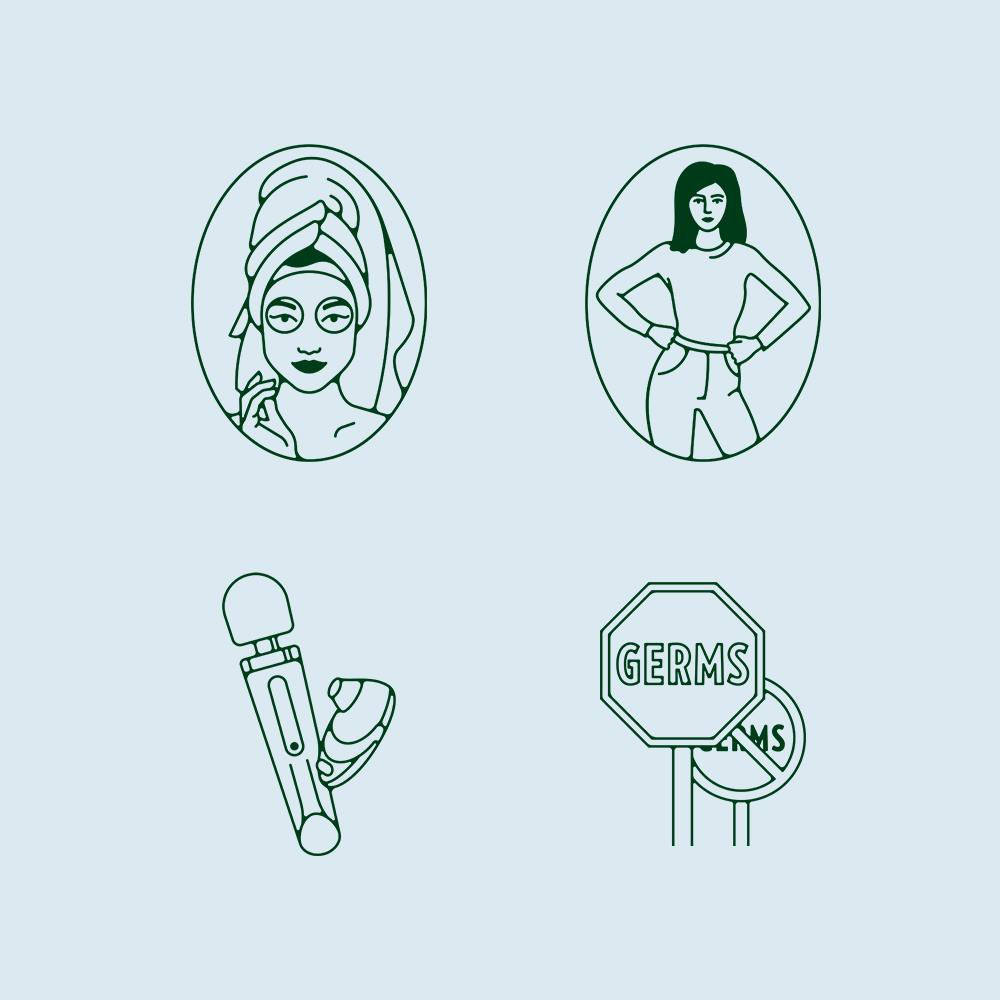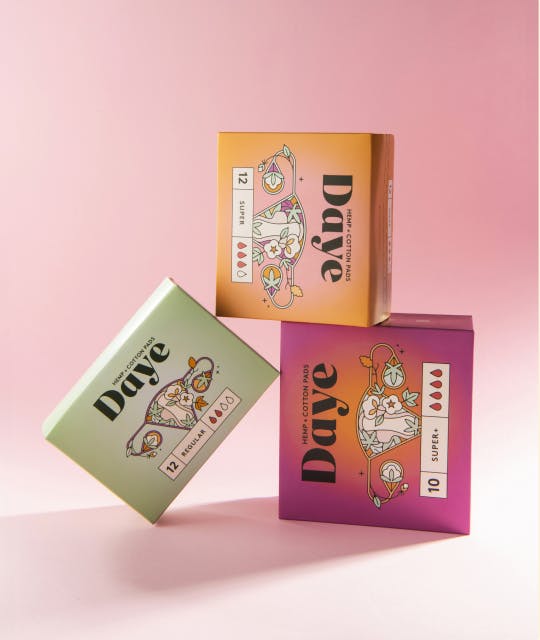Written by Liv Cassano
Illustrated by Erin Rommel
From menarche to menopause, your menstrual cycle pretty much rules your life. It’s comprised of a whole bunch of hormone-driven episodes that affect everything from your mental health to cognitive function, energy levels, libido, skin health, inflammation and even bowel movements.
Understanding the menstrual cycle in its complex entirety can be overwhelming, but it’s the best way to tune into your body’s natural rhythms. It’s also a great way to make sense of how—and why—your mind and body are affected by it throughout the month.
As Martie Haselton writes in Hormonal: “Hormones are a crucial reason we’ve survived and thrived—while hormones definitely influence female behaviour, there is a hidden intelligence embedded in the female fertility cycle: an ancient knowledge that women can use to make the best decisions in their modern lives.”
Human females have approximately 400 menstrual cycles over the average lifespan—that’s more than any other species—but before we get into it, here’s a gentle reminder that everyone is different and no two cycles are alike. Although a menstrual cycle usually lasts between 24-38 days (28 on average), some can be longer or shorter, regular or irregular, and the best way to get to you know your cycle is to track it. The days of your menstrual phases mentioned in this guide are no more than an average, so don’t take them as gospel!
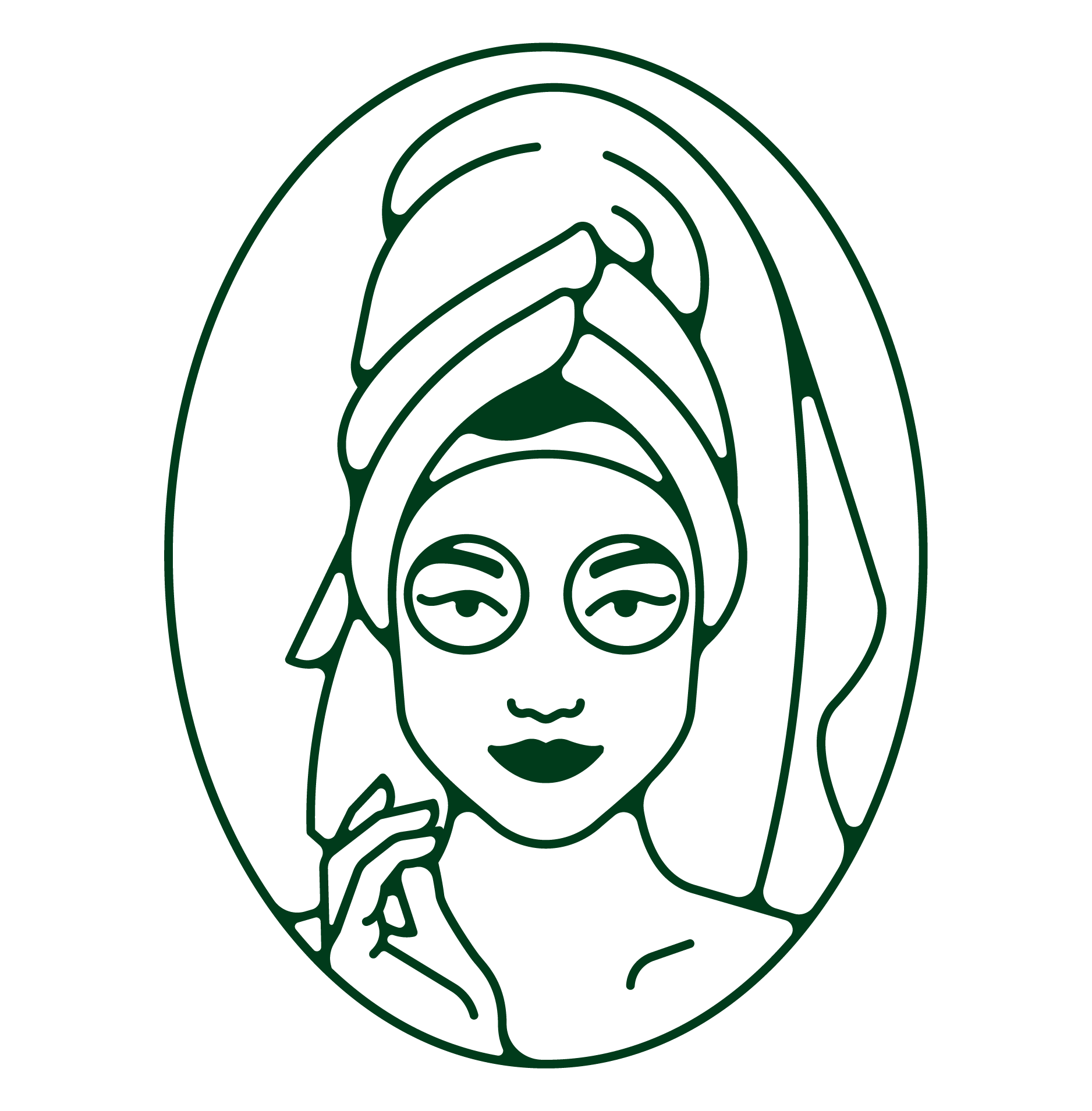
Menstrual phase: there will be blood
Day 1-5
The cycle starts with your period, the phase that arguably gets the most attention. During menstruation the endometrium intended to support a pregnancy is no longer needed so your body sheds it—along with a combination of blood and mucus, which make up your menses.
Oestrogen and progesterone are at their lowest at this time, so it’s normal to experience symptoms such as cramps, breast tenderness, bloating, lower back pain, and diarrhoea—FUN!
Since you’re busy shedding your uterine lining, it’s normal to feel more tired or withdrawn than usual. This is your body’s way of telling you to chill and take it easy, making it the perfect time to rest and recharge.
Daye’s Daily Dose: If you’re trying to ease period pains but don’t want to pop ibuprofen 24/7, we recommend opting for non-pharmacological methods. Light exercise (if you can be bothered), meditation, heating pads and acupuncture are all proven pain-relieving treatments.

Follicular phase: get ready for launch
Day 6-11
The follicular phase starts on the first day of your period, so there is some overlap with the menstrual phase. This is when your pituitary gland starts producing follicle stimulating hormone (FSH), which in turn tells your ovaries: “get ready, ‘cause you’re about to release an egg soon.”
Once one of your ovaries has chosen *the* follicle (the favourite one, if you will), about half way through the follicular phase, the dominant egg-containing follicle produces oestrogen and grows. This ovary’s done for the month, and gives your other ovary a chance to do the heavy lifting during the following cycle—that is, if you have a regular period.
While your ovaries are busy developing the follicle, your uterus is responding to the rise in oestrogen by rebuilding the endometrium that was shed during your last period. Your uterus is basically a 24/7 construction site. This is where your body would store a potential fertilised egg during pregnancy.
The follicular phase is when you’re most extroverted, and researchers believe it may be your body’s way of seeking out a mate in time for ovulation.
Daye’s Daily Dose: Schedule outings with your mates, networking events, important presentations, and maybe try a new workout class since your energy levels are higher.
“
Your uterus is basically a 24/7 construction site.
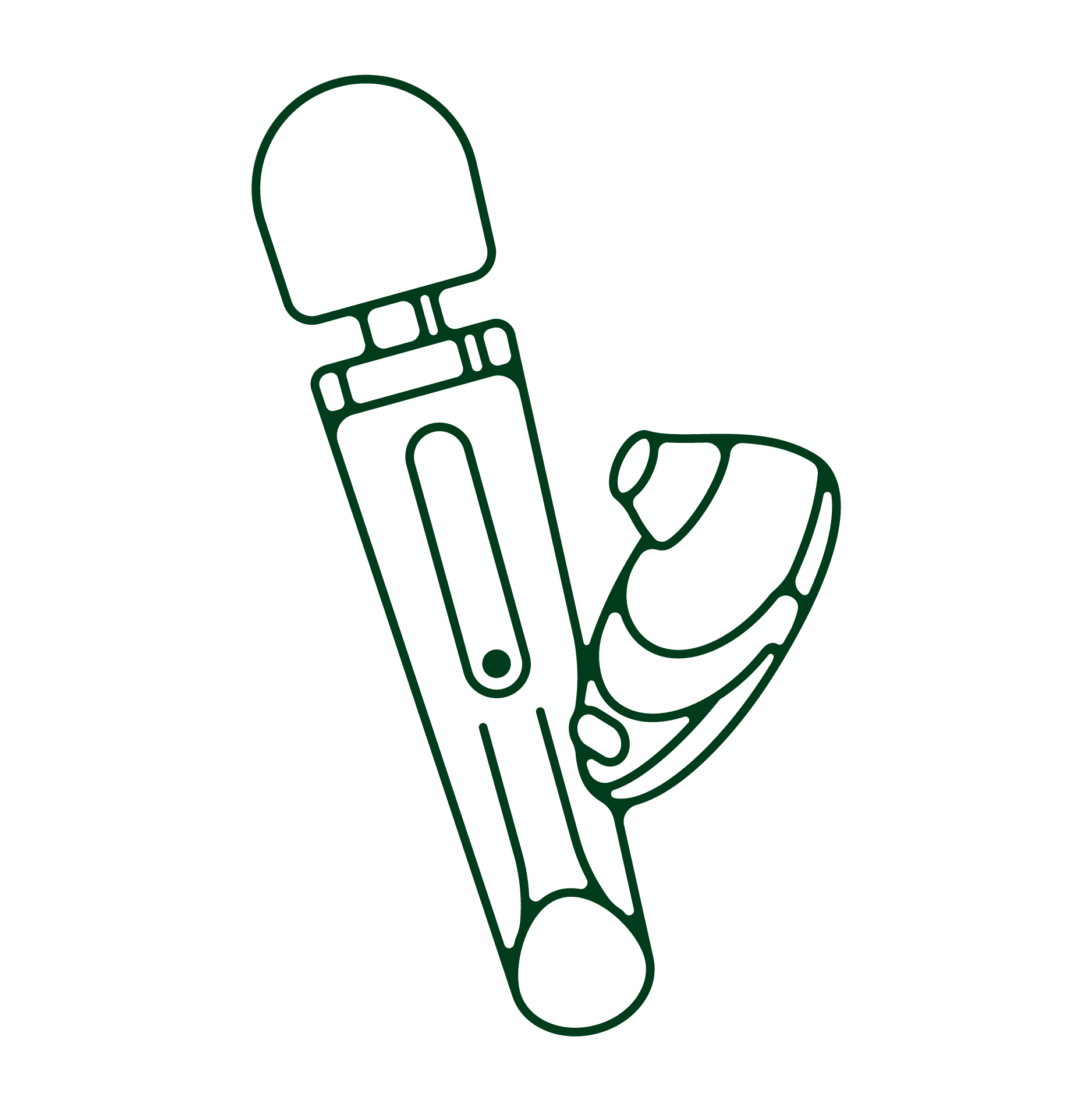
Ovulation phase: party time
Day 12-17
Remember our follicle friend? The one that contains an egg? It’s grown larger and produced a lot more oestrogen. Once oestrogen levels are at their peak, they signal your brain to produce a surge of luteinising hormone (LH), which causes your ovary to release an egg. This typically happens on the 14th day of your cycle, and is known as ovulation.
When your oestrogen levels are at their highest, so are you. Women often feel more attractive during this phase, and with good reason. Your skin is clear and radiant, your social skills are perfect, and your confidence is soaring. Additionally, thanks to a rise in testosterone, you’re also much more sensual. Your libido is higher during ovulation because it’s the only phase of your cycle where you can get pregnant—your body is smart like that.
Furthermore, cishet women are more likely to partake in social activities that brings them in contact with men. This increased desire to go out to parties, clubs and settings where you can socialise with potential partners is what biologists call “mate-search effort” phase. Fun fact: sperm can live inside your body for up to 5 days, so pregnancy can happen even if you had sex a few days before you started ovulating.
Even if you’re not looking for a partner, your libido is still peaking. In fact, studies show that women are also more prone to self pleasure during this period—and have more orgasms.
Daye’s Daily Dose: This is the time for pleasure, fun and excitement. Go get yours—with or without a partner! Free up your schedule and plan a date night with your SO, or at the very least make sure your vibrator is fully charged.
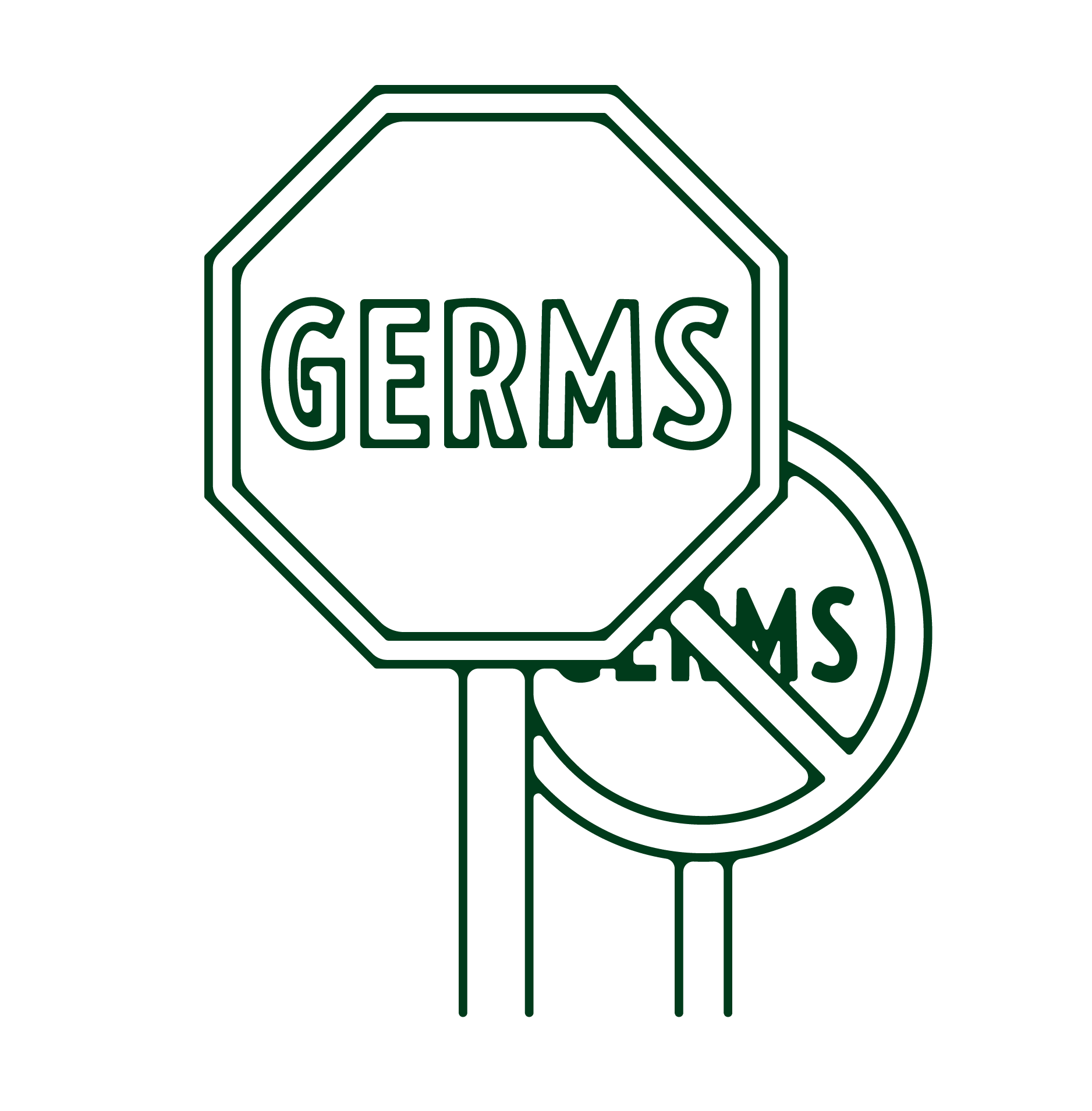
Luteal phase: zero hour
Day 18-28
Once ovulation has happened, the follicle turns into a corpus luteum and starts producing oestrogen and progesterone. Progesterone runs the luteal show, peaking halfway and keeping your uterine lining thick. Although we don't know the specific mechanism involved, it’s assumed that this spike in progesterone also causes the onset of PMS symptoms, such as mood swings, acne, bloating, constipation and headaches.
At this point, your endometrium has stopped thickening and is getting ready for a potential fertilised egg to implant.
The luteal phase is make-or-break for a pregnancy. If the fertilised egg implants, all that progesterone will support early pregnancy. If the egg doesn’t implant, the corpus luteum will shrink and get reabsorbed into the body, causing the dramatic drop in oestrogen and progesterone that causes your endometrium to shed (menstruation).
The potential for pregnancy also puts you on high alert for risk of disease. Progesterone’s immune-suppressing effect on the body makes you especially wary of sources of illness, turning you into a sort of temporary germaphobe.
Progesterone acts as a mood mellower, so the luteal phase is that time of the month where you’re likely to feel sluggish and more inclined to turn to self-care, so don’t be too hard on yourself if you’re not operating at your full potential.
Daye’s Daily Dose: This is the longest phase of your cycle, and the most volatile. Be ready to roll with the punches and listen to your body. Don’t be afraid to work from home (if you employer allows it), or reschedule plans you made while you were ovulating. If you’re feeling more anxious or gloomy than usual, know it will pass and allow yourself to feel those emotions. As for the bloat… try peppermint oil!
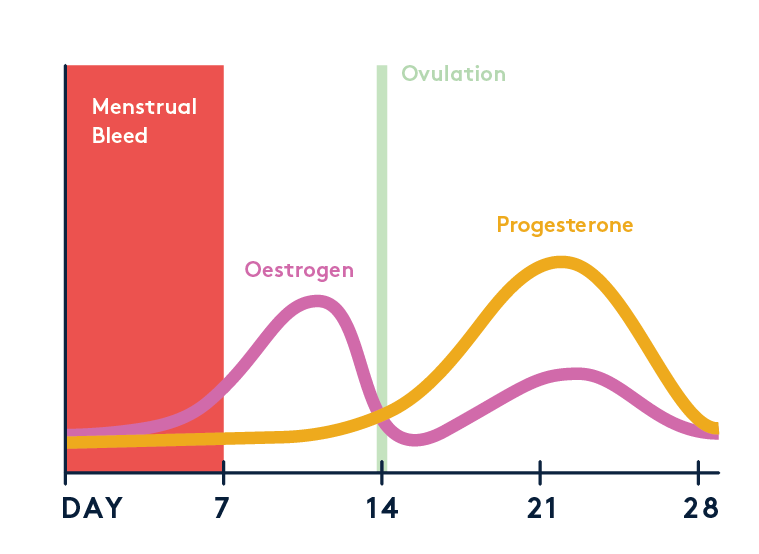
TL;DR
- The menstrual cycle starts the first day of your period and ends when the next one begins. It has 4 phases: menstrual, follicular, ovulation, and luteal.
- The first part of the cycle prepares an egg to be released from the ovary and thickens the lining of the uterus. The second part of the cycle prepares the uterus to accept a fertilised egg. If a pregnancy doesn’t happen, it prepares your body for the next cycle.
- Your cycle is controlled by 4 hormones: oestrogen, progesterone, FSH and LH.
- Energy levels, cognitive functions, mood, bowels and libido are all affected by your current menstrual phase.
- Every person is different and may have shorter or longer phase lengths. It’s highly unlikely the length of each of your menstrual phases is consistent. They’ll change monthly based on lifestyle factors and as you age. Your period and follicular phase often overlap for a bit.
Relevant products



